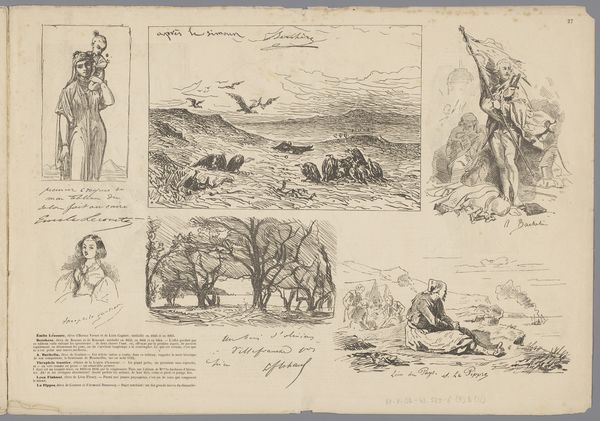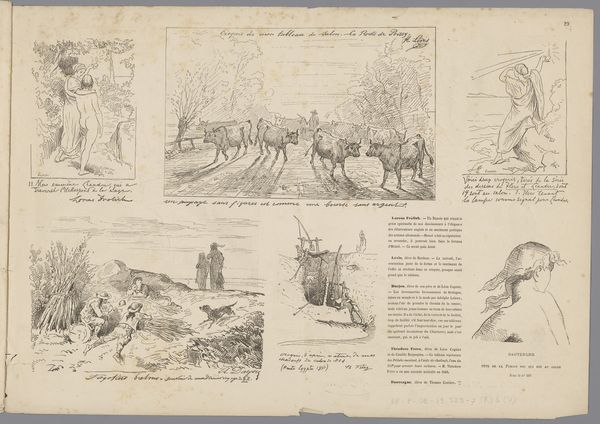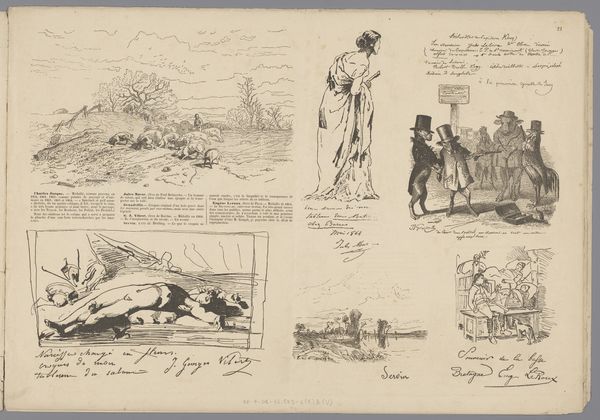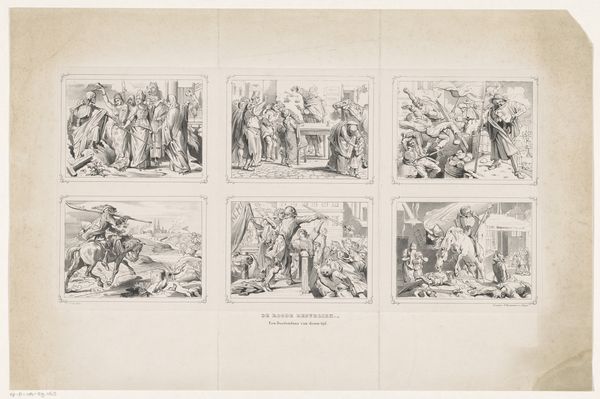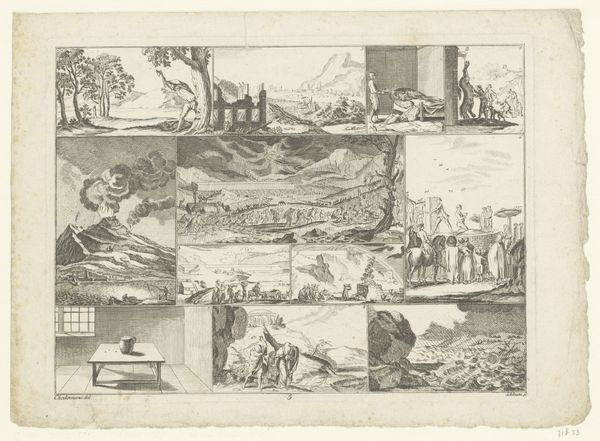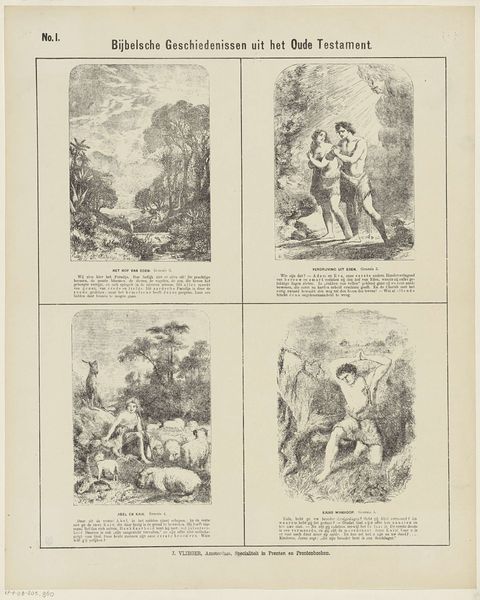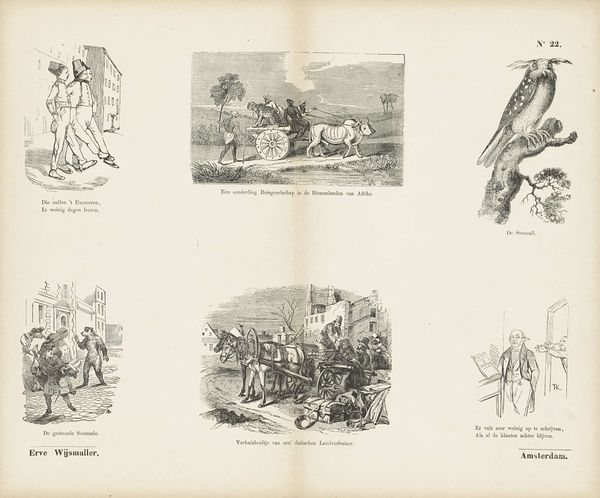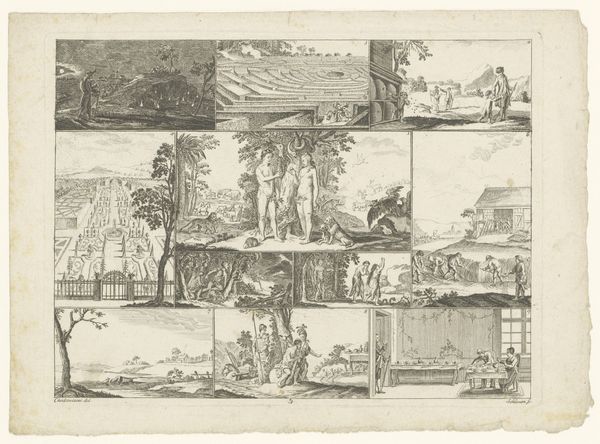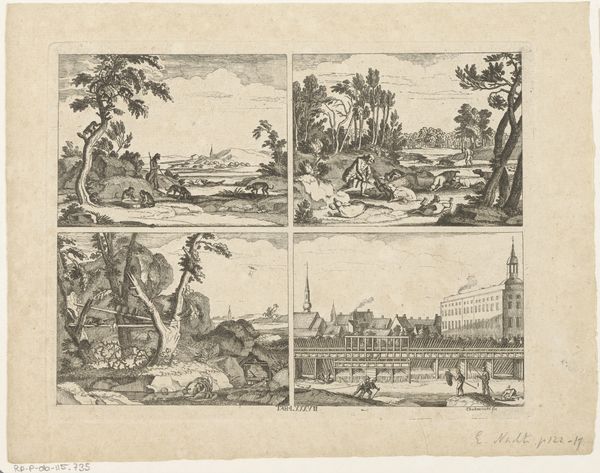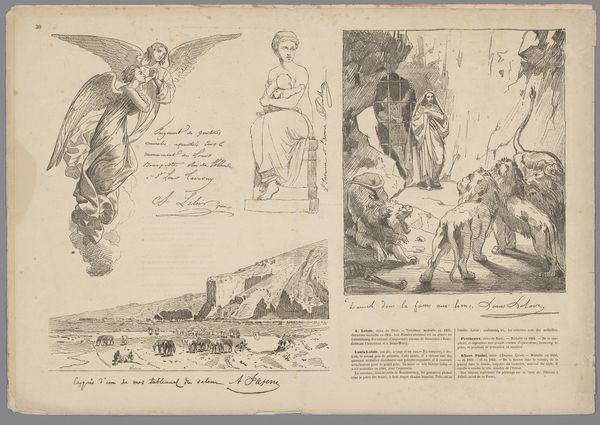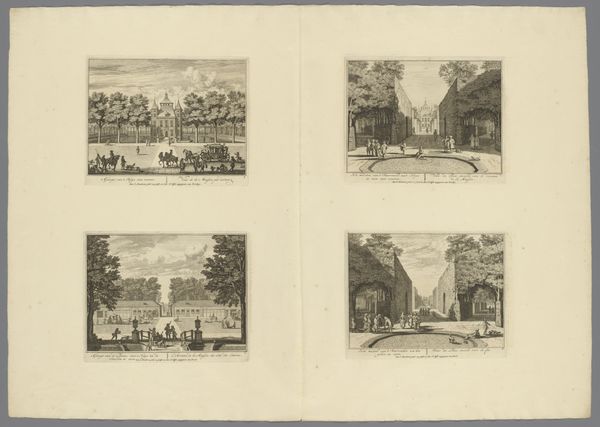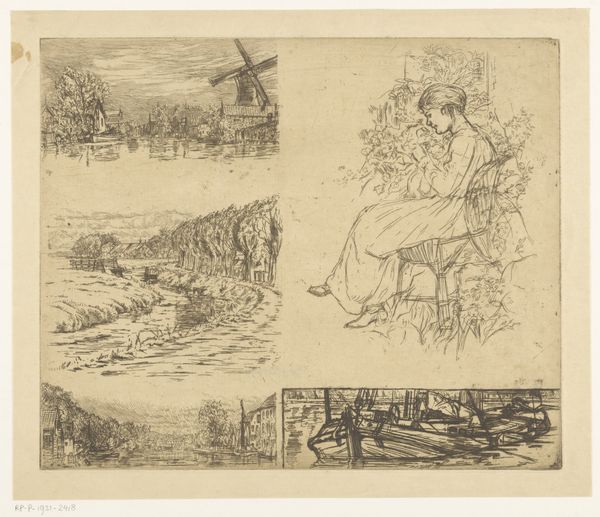
Gezicht op een huis, kustlandschap, drie paarden en verschillende voorstellingen van putti Possibly 1864 - 1866
0:00
0:00
drawing, print, etching, paper, ink, engraving
#
drawing
#
narrative-art
# print
#
etching
#
paper
#
ink
#
folk-art
#
geometric
#
engraving
#
miniature
Dimensions: height 327 mm, width 468 mm
Copyright: Rijks Museum: Open Domain
This print by Firmin Gillot features various scenes, but the putti, or cherubic figures, draw my eye. Emerging from classical antiquity and flourishing in the Renaissance, putti symbolize love, innocence, and divine presence. We find them frolicking in many contexts, from decorating tombs to adorning scenes of Venus and Cupid. Here, they are playfully engaged in artistic pursuits, perhaps a nod to the creative spirit of the artist. Consider the ancient Greek Eros, the god of love, often depicted as a winged child, and his Roman counterpart, Cupid. Over time, these figures transformed into the cherubic putti we see in Renaissance art and beyond. This evolution reflects a shift in cultural values, yet the underlying theme of love and innocence remains. Such imagery taps into our collective memory, resonating with deep-seated emotions linked to childhood, purity, and the divine. The putti's enduring presence in art history underscores the cyclical nature of symbols, their ability to resurface, adapt, and continue to evoke profound emotions across centuries.
Comments
No comments
Be the first to comment and join the conversation on the ultimate creative platform.
